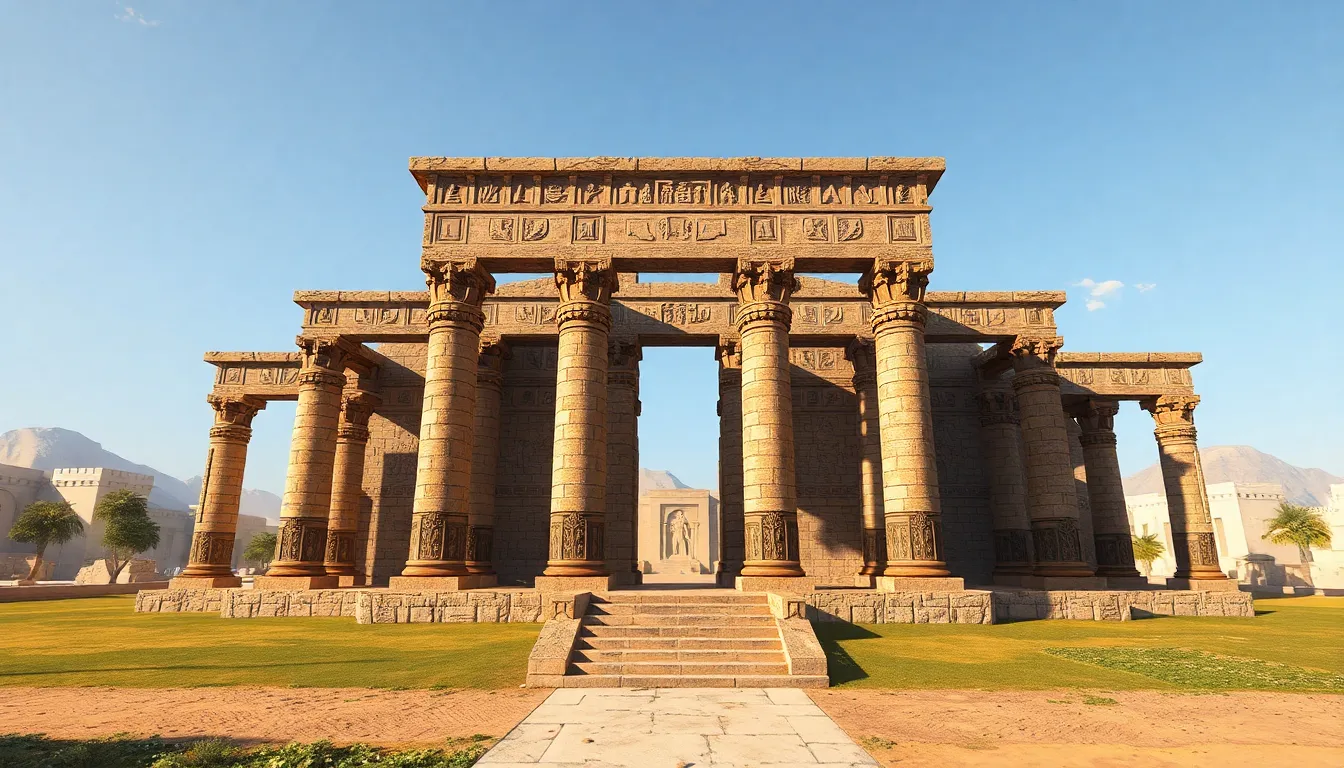The Symbolism Behind Ancient Egyptian Temple Layouts
I. Introduction
Ancient Egyptian temples were not merely places of worship; they were intricate structures that embodied the beliefs, culture, and artistry of one of the world’s oldest civilizations. These sacred spaces played a crucial role in the religious and social life of the Egyptians, serving as the interface between the divine and the earthly realms.
The layout of these temples was deeply symbolic, reflecting the Egyptians’ understanding of the cosmos and their complex relationship with their deities. This article delves into the significance of temple layouts in Ancient Egyptian culture, exploring how architecture and design conveyed spiritual meaning.
II. Historical Context of Ancient Egyptian Temples
The evolution of Ancient Egyptian temple architecture can be traced through various dynasties, each contributing its unique style and cultural influences. From the simple structures of the Early Dynastic Period to the grandiose edifices of the New Kingdom, temple design underwent significant transformations.
- Early Dynastic Period: The first temples were modest and primarily made of mudbrick.
- Middle Kingdom: There was a shift towards stone construction, and temples became more elaborate.
- New Kingdom: This era saw the construction of monumental temples like Karnak and Luxor, showcasing intricate carvings and massive columns.
Key historical events, such as the establishment of the pharaohs’ divine right to rule and the unification of Upper and Lower Egypt, also influenced temple construction, as these structures were seen as manifestations of divine order.
Among the most significant temples are:
- The Temple of Karnak: Dedicated to the god Amun, it is one of the largest religious buildings in the world.
- The Temple of Luxor: Known for its impressive obelisks and detailed reliefs.
- The Temple of Hatshepsut: Built for the female pharaoh Hatshepsut, it symbolizes her divine birth and power.
III. Basic Layout of Ancient Egyptian Temples
Ancient Egyptian temples typically followed a standardized layout that included several architectural features and sections:
- Entrance: Often marked by massive pylons, symbolizing the transition from the mundane to the sacred.
- Courtyards: Open spaces used for rituals and gatherings, allowing access to the inner sanctums.
- Sanctuaries: The most sacred areas where the deity’s statue was housed, accessible only to priests.
The axial alignment of temples was crucial, as it oriented the structure towards specific celestial bodies or other significant landmarks, reinforcing the connection between the temple and the cosmos.
IV. Symbolism of Space and Structure
The design of Ancient Egyptian temples was a reflection of their cosmological beliefs. The layout represented a microcosm of the universe, illustrating the relationship between the earth and the heavens.
- Representation of the Cosmos: Temples were designed to mirror the structure of the cosmos, with specific areas representing different celestial realms.
- Journey from Earthly to Divine: The progression through the temple was symbolic of the journey one takes from the physical world to the divine presence.
- Height and Elevation: The increasing height of the temple structures represented a closer connection to the gods, culminating in the sanctuary.
V. The Role of Deities in Temple Layout
The layout of temples was significantly influenced by the deities they were dedicated to. Each god or goddess had specific associations that shaped the arrangement of the temple spaces.
The sanctum, often the most sacred area, was central to this layout, housing the cult statue of the deity and serving as a focal point for worship. The relationship between the sanctum and the rest of the temple was crucial for ritual practices.
Iconography played a vital role in temple layouts, with images and symbols strategically placed to convey religious narratives and the power of the deities.
VI. Rituals and Their Impact on Temple Design
Rituals performed in temples were integral to their design, as each activity required specific spatial arrangements. Common rituals included:
- Daily Offerings: Required access to the sanctum for priests to present offerings to the deity.
- Festivals: Larger courtyards were designed to accommodate crowds during significant religious celebrations.
- Burial Rites: Some temples served as mortuary temples, where rituals for the deceased pharaohs were performed.
The relationship between ritual practices and temple architecture is evident in the thoughtful design of spaces that facilitated these sacred activities. Additionally, seasonal and cyclical events, such as the flooding of the Nile, were often reflected in the temple’s layout and the timing of rituals.
VII. The Influence of Geography and Environment
The natural landscape of Egypt had a profound effect on temple layouts. Temples were often constructed in locations that held geographical significance, such as near the Nile or at the base of sacred mountains.
This integration of temples within the landscape allowed for a harmonious relationship between the human-made structures and the natural world, reinforcing the symbolism of the divine.
- Natural Surroundings: Temples were often aligned with natural features, such as the rising sun or significant geographical landmarks.
- Symbolism from Geographic Elements: The desert, the Nile, and mountains were seen as representations of different aspects of life and death, further enhancing the spiritual significance of the temples.
VIII. Conclusion
The layouts of Ancient Egyptian temples were rich in symbolism and meaning, reflecting the culture’s intricate beliefs about the cosmos, deities, and the relationship between the earthly and divine. These architectural wonders continue to fascinate scholars and enthusiasts alike, shedding light on the profound spiritual life of Ancient Egypt.
As we study the designs and layouts of these temples, we gain insights into the enduring legacy of Ancient Egyptian symbolism, which continues to influence modern interpretations of spirituality and architecture. Archaeological studies of these structures not only enhance our understanding of the past but also inspire contemporary discussions about the interplay between space, culture, and belief.




